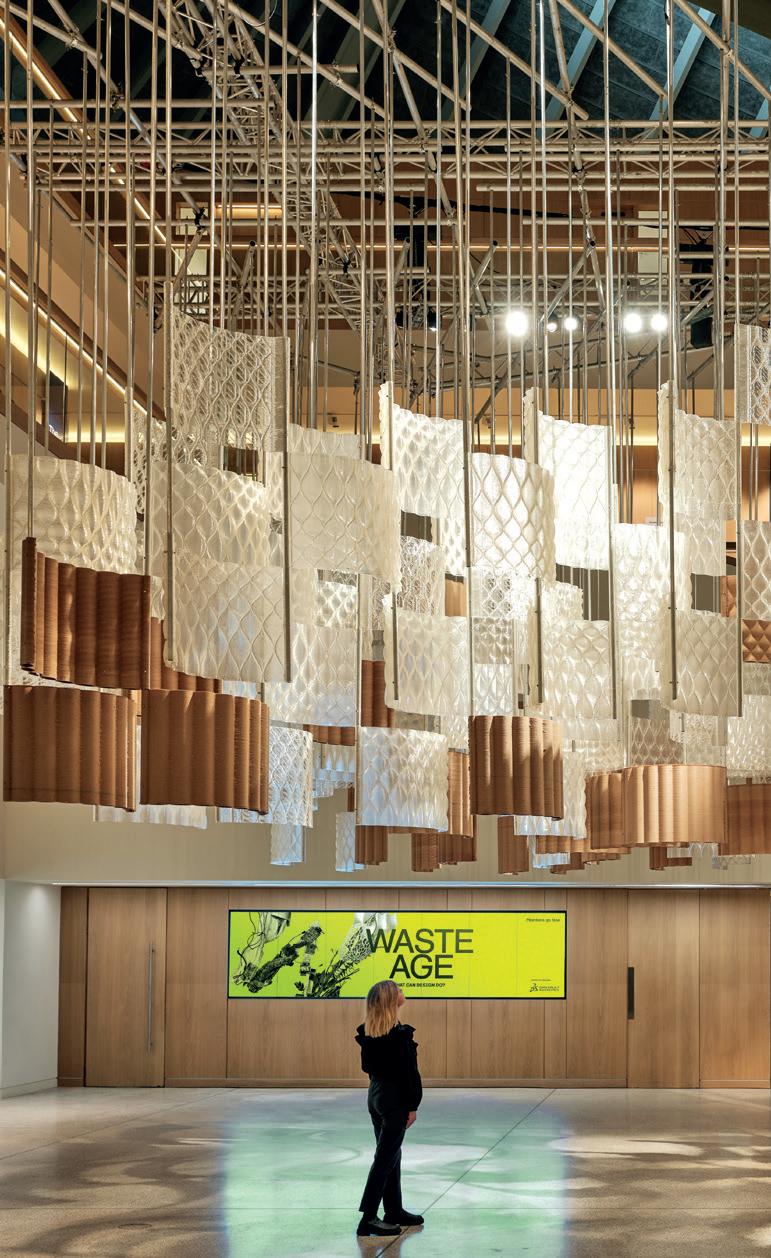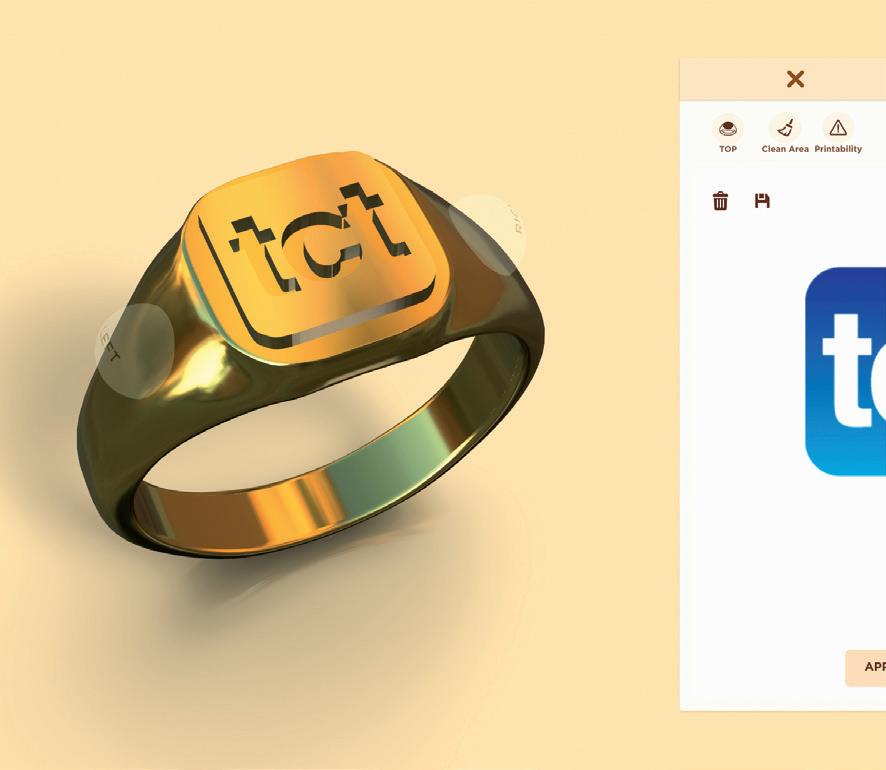IS THIS THE FUTURE OF JEWELLERY?
Laura speaks to THEFUTUREOFJEWELRY co-founder Casey Melvin about making customised jewellery more accessible.
I
t’s hard not to feel inspired when talking to Casey Melvin. The CEO – or rather Co-CEO with sister Janine – a Princeton grad, was in law school spending a semester abroad at Oxford in 2016, where a weekend getaway to Spain ignited an idea that would change the course of their careers. “If you would have told me five or ten years ago that I would be an entrepreneur or own my own company of any sort, I probably would have said you were lying,” Melvin told TCT while recalling a trip to Mallorca that would prove formative for THEFUTUREOFJEWELRY (TFOJ), a personalised jewellery company the duo founded, that leverages 3D technologies. Searching for a memento of their summer, the sisters happened across a plain gold signet ring. It fit Melvin perfectly and they watched, fascinated, as the jewellery store owner hand etched the initials ‘CM’ on top. When they returned home to Pittsburgh, Melvin began searching for a similar ring to gift to her sister but even the few that came close were either the wrong size or too expensive. Melvin was surprised to learn that there wasn’t already a solution on the market that would deliver customisation at an accessible price point. So, they set out to change that. It was a trip to Shanghai and a visit to TCT Asia 2017 where the founders got a real sense of how
020 / www.tctmagazine.com / 30.1
3D printing could turn their vision into a reality. “It's like getting a masters in 3D printing,” Melvin said of walking that first show floor. They reached out to billionaire investor Mark Cuban, a fellow Pittsburgh native, who responded with sage advice to focus on their core product – a software platform – and to outsource their 3D manufacturing. By 2017, the co-founders had assembled a team to develop their signet ring online customisation platform, and in four short years, began shipping. The platform’s simplicity allows customers to add their initials, select from a library of designs, or upload their own image to generate a 3D model. They can then choose the shape, style, material and size of their ring (TFOJ's algorithm can automatically generate 125 sizes), and the price will adjust accordingly. Once ordered, the design is then 3D printed using a high resolution DLP process before casting into the customer’s chosen metal. Signet rings have been around for thousands of years, typically the domain of the powerful and wealthy. As time and trends have moved on, so too have the jewellery’s status, yet as Melvin discovered, even today, personalised signet rings remain out of reach. TFOJ aims to enable accessibility through not only a transparent pricing model – in which they ensure every piece is priced with the same markup, no matter the size or
material – but also with a consumerfriendly design platform, and Melvin adds: “It was really important to us that you didn't need to be a designer or have 3D modeling experience.” But that accessibility element extends to the customisation too. Unlike that first signet back in Mallorca, TFOJ wants to ensure size and fit are not a barrier for its customers. Melvin explained: “There were no ring sizes before there was mass produced jewellery, every piece was made to order. These standard ring sizes really arose in the 19th and 20th Centuries. We're going to actually do away with standard sizes so every ring can be fit to the person who's wearing it.”
SHOWN: SIGNET RING CUSTOMISATION PLATFORM






